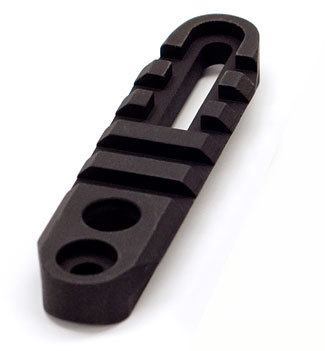Install a Atlas Bipod on a Remington 700
Bipods is becoming increasingly popular this past couple of years. A few of the more recent, durable models such as the Atlas and Sierra 7 need a Picatinny (1913) rail in order to attach it to the firearm. In case you are shooting an AR-15/M16 design firearm using a rail system, this is not a lot of problems. Nevertheless, when you are shooting a bolt action firearm using a conventional stock, you will require a rail if you would like the elegant bipod.
The Atlas bipod demonstrated in this article needs a 1913 rail so that it can be able to be mounted on a firearm.
 Accu-shot tends to make 2 various Atlas bipod rails, typically the BT15 as well as the BT17. These two rails are usually modular, taking various intervals of pre-installed QD studs. The BT is 3.35″ extended and accommodates opening designs along with 1.76″ to 2.78″ center-to-center intervals. The BT17 is 4.00″ extended and accommodates opening designs along with 2.20″ to 3.5″ center-to-center intervals.
Accu-shot tends to make 2 various Atlas bipod rails, typically the BT15 as well as the BT17. These two rails are usually modular, taking various intervals of pre-installed QD studs. The BT is 3.35″ extended and accommodates opening designs along with 1.76″ to 2.78″ center-to-center intervals. The BT17 is 4.00″ extended and accommodates opening designs along with 2.20″ to 3.5″ center-to-center intervals.
ATLAS BT17 4″ 1903 rail ATLAS BT17 4″ 1903 rail
Several guns include 2 QD studs on the fore-ends. In case your firearm is often furnished with 2 QD around the fore-end, just pick the suitable rail for the space, unscrew the studs and screw the rail in to place.
When a stock comes with 2 QD studs around the fore-end set up is simple.
Just take away the studs, place the rail around the stock and screw all of them back. I recommend changing the studs with 10/32 screws so that they will not affect the bipod.
In the event you only have 1 QD stud (or no studs), being the truth using the McMillan A5 stock demonstrated beneath, you will have to set up a t-nut.
It occurred that I possess the 10/32 t-nuts and screws necessary for set up, but if you do not, almost all hardware retailers will certainly.
To start, the safe and vacant barreled action is taken off the stock. The stock demonstrated is a McMillan A5, however the methods applied in this article can be used on numerous stocks.
This stock merely offers 1 QD stud around the forend (notice opening exactly where it had been taken out). We are going to have an additional installation stage for the rail system.
On McMillan stocks having a gel coat, you are able to typically view the seam in which the 2 halves are joined. I line up this over the middle of the rail adapter.
By using a #8 drill I cautiously drill down an opening with the stock. I make an effort to construct the holes so a screw does not necessarily go through a rail slot.
When you proceed gradual you will not have any kind of chips. Including tape might help decrease tear out.
The screw that secures the rail is saved in the stock with a 10/32 t-nut. The main one I have been using is 3/4″ in size. I personally use a 3/4″ counterbore together with the exact same #8 drill like a pilot to counterbore hole within the stock. That might be poor. Actually awful!
Although a counterbore definitely helps make set up simple, this is a specific device. Unless you acquire one, a Forstner drill works fine.
The counterbore will certainly do a great work on the stock.
I combine several 5-minute epoxy and use it on the counterbored hole. It will help protect the T-nut in position.
A button head screw is utilized to tighten up the rail towards the stock. Whenever torque is placed on the t-nut, its drawn into the counterbore. Any kind of epoxy that seeps upward is washed with a natural cotton swab.
Completed! As soon as everything dries the rail will be looking forward to a bipod. Notice both rail mounting alternatives. You may possibly utilize a screw (top) or a QD stud (bottom). The clean cup opening (bottom) within the rail must be looking at the rear of the rifle.
